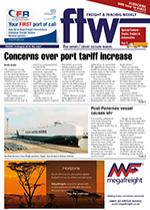Uncertainty over Brexit prevails as no-one knows what to expect come 2019. This is according to Trudi Hartzenberg, executive director of the Trade Law Centre (Tralac), who said not only would it impact on South Africa’s trade with the United Kingdom (UK) but also with the European Union (EU).
Addressing exporters in Cape Town recently, Hartzenberg said developments were taking place on a daily basis around Brexit and keeping up with the complex process was difficult. “There’s still a lot of uncertainty how this process will unfold and what the implications will be for us,” she said.
“There’s a collection of issues that the Department of Trade and Industry is engaging the British government about, so by no means are we sitting and waiting.” She added that there was simply no way of knowing what the relationship between the EU and the UK would be postBrexit. “And that relationship will be absolutely material not only for South Africa’s relationship with the UK, but also our relationship with the EU,” she said.
Hartzenberg said there were very obvious implications that would come out of Brexit, especially relating to the issue of tariff rate quotas.
“Under the European Union-Southern African Development Community Economic Partnership Agreement (EU-SADC EPA) South Africa has a quota of 110 million litres of wine that can enter the EU duty free,” she said. “Just over 3% of that goes to the UK. It’s uncertain what will happen post-Brexit with the tariff rate quota.”
She said potentially the quota could stay the same and meant that South Africa could increase its wine exports to Europe as the 30% to the UK would no longer be calculated in. “But it’s anyone’s question whether the wine-producing countries in Europe will be prepared to allow for the current quota.”
There was also uncertainty around the logistics of moving freight post-Brexit.
“If you’re exporting to the UK but have traditionally done so via the European ports, and the relationship between the UK and the EU is not ideal, then there is a hard border to deal with in the future. “These are real issues that could become extremely challenging for exporters and the cost of moving freight into these markets could see increases in the future.”

